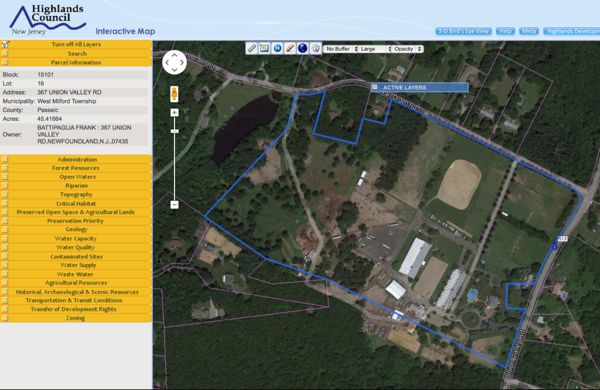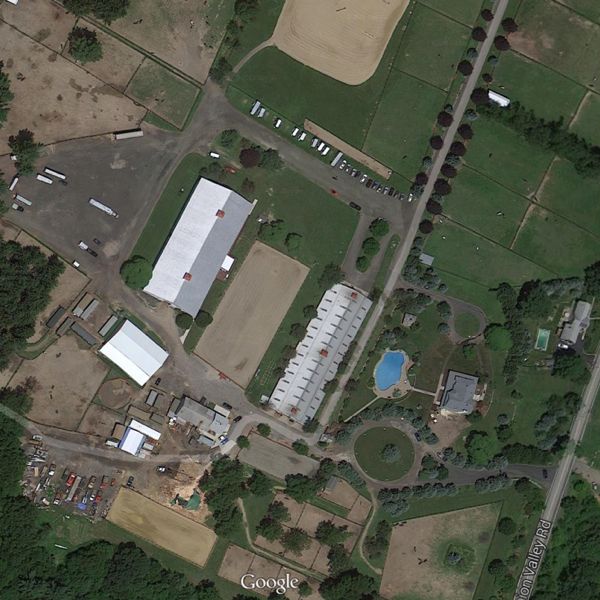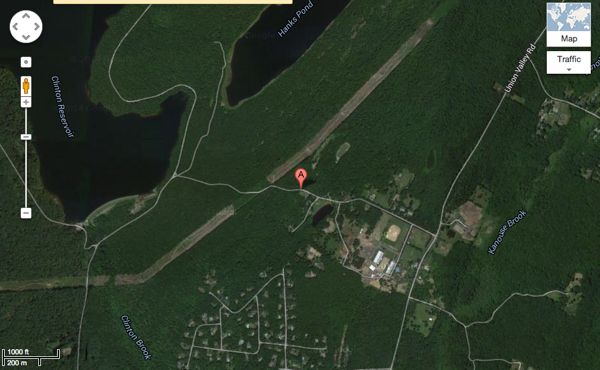Thanks to my friend Scott Olson for forwarding this – I like the Storify format
Take a look at the aerial view above – it’s a horse farm in West Milford:
Let’s zoom in for a closer look:
Now consider this statement:
Ruga said preserving land delivers a benefit not only to the landowner, but to all the taxpayers.
“As taxpayers, we’re buying something of value from him that provides a public benefit,” Ruga said.
“Farmland can be very good recharge for groundwater, or maybe it’s a habitat for birds. But when you pave it over, it creates all sorts of problems for eternity.”
~~~ for context and complete details, see: Passaic County buys 45-acre working horse farm in West Milford
That is one pile of horseshit. Let’s take the turds one by one (my grandfather called them “road apples”):
1. There is very little “recharge for groundwater” on this site, and barn roofs, parking lots, and swimming pools do not provide high quality bird habitat.
2. The land in question is in the Highlands Preservation Area, in the Newark Watershed. It is protected by very strict regulations that severely limit development. It can not legally be “paved over”.
3. The only “public benefit” I can imagine that could result from this site would be related to water quality, which is being adversely impacted by nutrient runoff from all the horses and by sediment loads from all the impervious surfaces on the site. Another public benefit could be public access.
But that would require that the site be purchased and current horse farm use terminated. Perhaps the buildings could be demolished and the fields be allowed to revert back to forest.
But the $1 million deal was for purchase of development rights only, so the land will continue to be operated as a horse farm, the adverse water quality impacts will continue and they land will be privately owned and operated.
So, the public and the environment get virtually NOTHING for $1 million – $22,222 per acre.
This is a perfect example of the abuses that must be reformed in the Open Space and Farmland Preservation programs.
[* The owner purchased the “farm” for $2.1 million, and its farmland assessed – he paid $213 in taxes on the farmland portion in 2012]
[An anonymous reader sent me an email that notes:
The horses are$60,000 $400,000 Arabians and show horses and they make money boarding horses for other wealthy folks on the area
In fact, it is likely that there would be more real public benefits if this site were developed as cluster designed affordable housing.
a) The site would have less impervious cover, less sediment and nutrient loaded runoff, and more groundwater recharge, more habitat, and more public access.
b) Horse farms, irrigation, and swimming pools consume a lot of water so water consumption could even go down, as could traffic, noise, and dust nuisance impacts.
c) Social justice could be advanced, as low and moderate income people would benefit from the public investment, instead of elite equestrians who now use the horse farm.
d) energy consumption and greenhouse gas emissions could be higher, given the site’s remote location and limited access to public transit. But I would need to know more about how much energy and horse farm consumes, which I assume is not insignificant.
Look at the regional context – on the edge of the Clinton reservoir:



